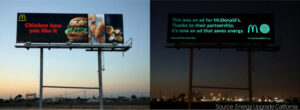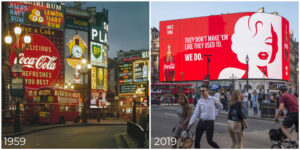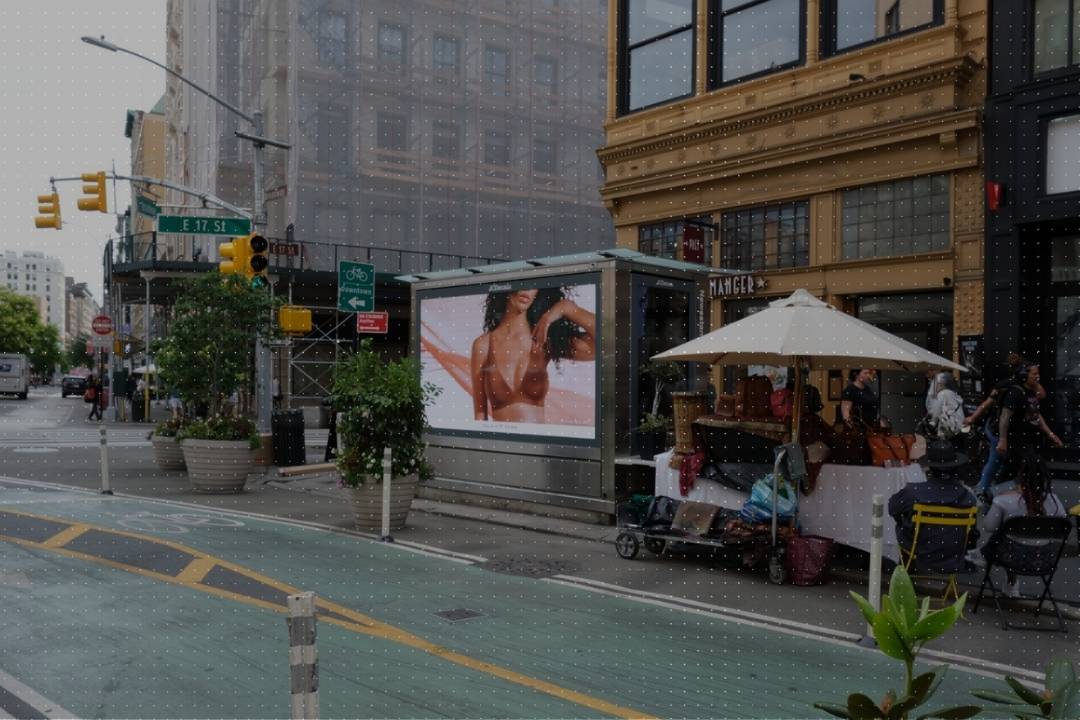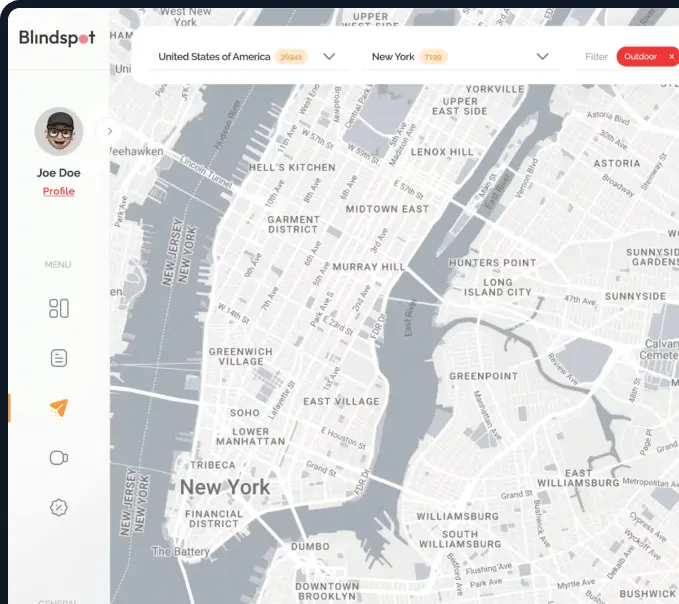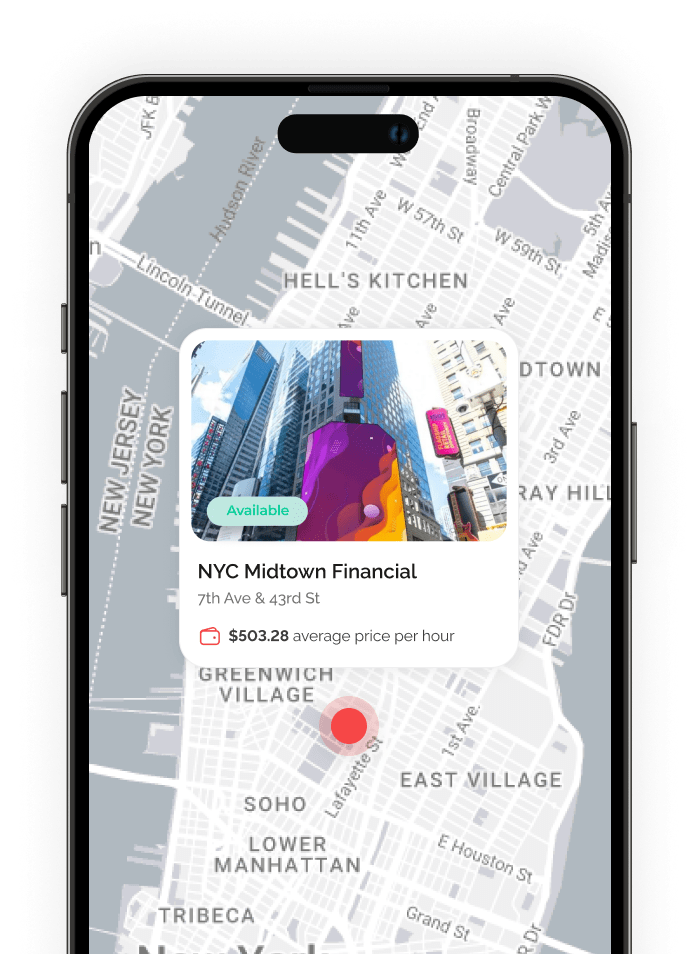Unlocking the Power of Billboard LED: The Future of Contextual DOOH Advertising
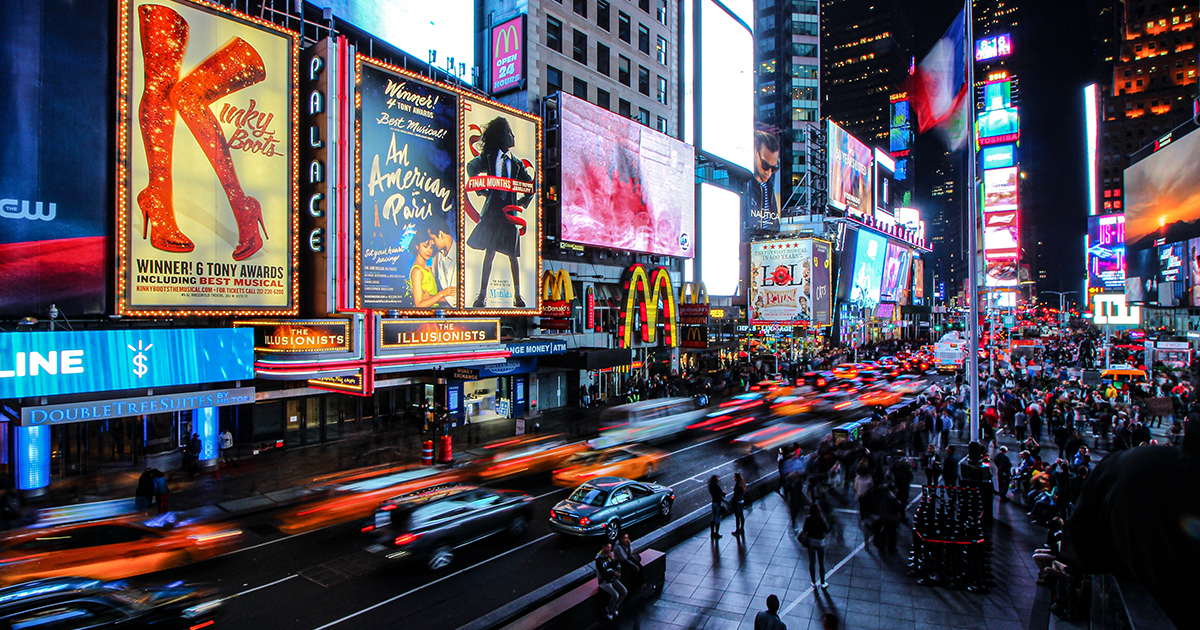
Definition and Purpose of Digital Billboards and Billboard LED
Billboard LED is an abbreviation for Billboard Light-Emitting Diode, a type of digital signage that leverages LED technology to display advertisements, messages, and more. Digital OOH and digital OOH advertising refer to the use of digital technology in out-of-home advertising, where DOOH refers to the evolution from static billboards to dynamic, data-driven digital signage. They’re commonly seen alongside highways, city streets, and at significant events. The purpose of LED billboards is to provide a medium that offers superior brightness, clarity, and energy efficiency than traditional out of home billboard alternatives. These digital displays allow businesses to exhibit dynamic content that can be updated and managed remotely, opening a world of opportunities for real-time and contextually relevant advertising.
Benefits of Using LED Technology in Billboards
Key advantages of LED billboards include:
- Higher brightness for excellent visibility from afar and during all hours of the day.
- Dynamic content capabilities that enable advertisers to switch messaging instantly to accommodate multiple marketing campaigns.
- Longevity, with LED billboards lasting over 100,000 hours of use.
- Lower maintenance costs compared to traditional printed billboards, which require regular replacements.
- Durability and weather resistance, ensuring reliable performance in various conditions.
- Significant energy savings, contributing to a lower overall cost of ownership.
- Immunity to ad blockers, guaranteeing that the advertising message always reaches the audience.
As a result, LED billboards have become a leading advertising channel for brands seeking high visibility.
Overview of the Impact of LED on the Advertising Industry
LED technology has left an indelible mark on the advertising industry. The introduction of LED billboards has given birth to the era of digital outdoor advertising, propelling a significant shift from static print ads to dynamic digital displays. This shift has allowed for increased flexibility in content, with the ability to display multiple ads on a single billboard, adapt messaging in real-time, and even respond to environmental factors.
Furthermore, LED billboard advertising has created new revenue streams for advertising companies and businesses alike. The ability to display multiple ads throughout the day means more advertising space to sell and purchase. Integrating LED billboards into an entire campaign can amplify results across multiple channels, enhancing the effectiveness of multichannel marketing strategies. Additionally, it’s empowered advertisers to create more engaging, visually striking campaigns that capture consumer attention and generate a higher return on investment.
In essence, LED technology’s impact on the advertising industry has been transformative, ushering in a new era of outdoor advertising that is dynamic, efficient, and ultimately, more effective. LED billboards also help reinforce a brand message through repeated exposure in high-traffic locations.
Types of Billboard LED Displays
Single-Color LED Displays
As the name suggests, single-color LED displays utilize only one color to present messages or content. Typically, this color is red or amber due to its high visibility. Single-color LED displays are often used when the message is simple and straightforward, such as parking signs, event notifications, or time and temperature displays. Despite their simplicity, these LED displays can still make a strong impact, especially when brightness and clarity are crucial.
Full-Color LED Displays
Full-color LED displays are the technicolor siblings of single-color displays. They leverage a mix of red, green, and blue diodes (RGB) that can combine to create a full spectrum of colors. This wide color range makes these displays the perfect choice for showcasing high-definition images, animations, and videos, allowing businesses to project vibrant and visually engaging content. In the context of advertising, full-color LED displays can significantly enhance ad recall and viewer engagement, and are commonly used to showcase digital ads that capture attention with vibrant visuals.
Indoor vs. Outdoor Advertising LED Displays
While both indoor and outdoor LED displays leverage the same core technology, they differ in design and application. Indoor LED displays are generally designed for close viewing distances, often using smaller pixel pitches to provide high-resolution images. These are commonly used in malls, restaurants, or trade shows, with digital menu boards being a prominent example of indoor digital signage in retail and hospitality environments.
Outdoor LED displays, on the other hand, are built to withstand weather elements and are designed for longer viewing distances. They often have larger pixel pitches and higher brightness to ensure visibility even under direct sunlight. Outdoor LED billboards are typical in busy streets, highways, and public squares, making a bold statement with their size and brightness.
Different Pixel Pitches and Their Significance
Pixel pitch refers to the distance from the center of one pixel to the center of the adjacent pixel in an LED display, usually measured in millimeters. The pixel pitch is significant because it directly affects the display’s resolution and optimal viewing distance.
Smaller pixel pitches mean more pixels are packed into a given space, resulting in higher resolution and clearer images. These are ideal for indoor displays where viewers are relatively close. Larger pixel pitches, conversely, provide less detailed but brighter images, suitable for outdoor LED billboards viewed from a distance. Understanding pixel pitches is essential when choosing the right LED billboard for your advertising needs.
Advantages of Billboard LED
High Visibility and Brightness
LED billboards are known for their high visibility and brightness, making them stand out, day or night, rain or shine. Roadside billboards and bus shelters are common locations for LED billboards due to their high exposure to pedestrians and commuters. The bright, vivid colors of LED displays capture attention even from great distances or in busy, cluttered environments, making them a potent tool for businesses seeking to increase brand visibility.
Energy Efficiency and Cost-Effectiveness
LED technology is remarkably energy-efficient, consuming less power than most other lighting solutions. This efficiency not only reduces the environmental impact but also significantly lowers the operational costs of running an LED billboard. Coupled with their extended lifespan and reduced maintenance needs, LED billboards emerge as a highly cost-effective outdoor advertising solution.
Improved Targeting and Advertising Effectiveness
LED billboard advertising allows businesses to tailor and schedule their content according to the time of day, the day of the week, or even in response to real-time events. Third party data, such as mobile and geolocation data, can also be used to enhance targeting and audience insights for LED billboard campaigns. This level of control enables businesses to deliver more relevant messages, improving targeting precision and advertising effectiveness. Furthermore, the dynamic nature of LED billboards fosters higher audience engagement, further boosting the overall advertising impact.
How Billboard LED Works
Overview of LED Technology
LED, or Light Emitting Diode, is a semiconductor device that emits light when an electrical current is passed through it. The color of the light depends on the material of the semiconductor. In LED billboards, millions of these tiny LEDs are arranged in a grid pattern. The LEDs are rapidly switched on and off, and when combined with the persistence of vision, this creates the illusion of a steady, bright light to the human eye.
Components of a Billboard LED Display
A typical LED billboard comprises multiple LED panels, each containing numerous LED modules. Each module has a set of red, green, and blue LEDs, allowing the display to produce the full-color spectrum. The LED billboard also includes a control system that regulates the lighting of the LEDs to produce the desired images or videos.
Factors to Consider When Choosing Billboard LED Displays
Budget and Cost Considerations
When planning for LED billboard advertising, budgeting plays a significant role. LED billboards can vary widely in cost, influenced by factors such as size, pixel pitch, installation complexity, and additional features. It’s crucial to balance the desired quality and impact of the LED display against your available budget. Remember, investing in a high-quality LED billboard can lead to better advertising effectiveness and long-term savings due to reduced maintenance and energy costs.
Content Management and Control Systems
A reliable content management system is crucial for managing the advertisements displayed on the LED billboard. Ideally, the system should allow for remote operation, scheduling of content, and real-time updates. The ability to control and adapt your advertising content easily is a key advantage of digital LED billboard advertising. These systems also enable businesses to advertise with targeted, real-time messaging, ensuring campaigns are relevant and timely.
DOOH Campaigns
DOOH campaigns, or Digital Out of Home campaigns, represent a modern evolution in outdoor advertising by harnessing the power of digital billboards, digital screens, and advanced digital signage. Unlike traditional static billboards, DOOH campaigns use dynamic content to engage audiences in real time across a variety of public spaces, from bustling shopping malls and grocery stores to busy city centers.
By integrating digital technology, advertisers can deliver contextually relevant messaging that adapts to the environment and audience. For example, a DOOH campaign might use mobile location data to target shoppers in a mall with personalized messages about in-store promotions, or display weather-specific ads at transit hubs. This level of customization not only increases brand visibility but also ensures that the right message reaches consumers at the right moment.
DOOH campaigns are also highly effective when combined with other advertising channels, such as mobile advertising, to create a seamless, omnichannel experience. By leveraging the flexibility of digital out of home media, brands can deliver dynamic, eye-catching content that stands out in crowded public spaces, making DOOH an essential tool for advertisers looking to maximize their reach and impact in today’s digital landscape.
Measuring Campaign Effectiveness
Understanding the impact of your DOOH campaigns is essential for optimizing your advertising strategy and maximizing return on investment. One of the key metrics used in digital out of home advertising is digital impressions, which track how many times your DOOH ads are displayed and potentially seen by audiences. This data provides valuable insights into the reach and frequency of your campaign, helping you assess its effectiveness.
Beyond impressions, advertisers can leverage real-time data and programmatic technology to further refine their campaigns. By analyzing foot traffic patterns and audience demographics, brands can optimize the placement and timing of their DOOH ads to ensure they reach the right audience at the most opportune moments. Integrating DOOH campaigns with other digital channels, such as online and mobile advertising, allows for a comprehensive, omnichannel marketing strategy that delivers consistent messaging across multiple touchpoints.
With these advanced measurement tools, advertisers can continuously monitor campaign performance, make data-driven adjustments, and ultimately improve the effectiveness of their DOOH campaigns. This approach not only enhances the impact of each ad but also ensures that advertising budgets are allocated efficiently for maximum results.
Programmatic DOOH Advertising
Programmatic DOOH advertising is transforming the way brands buy and sell digital out of home ad space. By utilizing automated, data-driven technology, advertisers can efficiently target specific audiences and deliver personalized messages in real time. This approach streamlines the process of purchasing DOOH inventory, allowing for real time auctions and dynamic ad placements that respond to changing audience behaviors and environmental factors.
With programmatic DOOH, advertisers can optimize their ad spend by using analytics to determine which locations, times, and messages are most effective for their target audience. For example, a brand can use programmatic technology to deliver contextually relevant messaging to commuters during rush hour or to shoppers near the point of purchase in retail locations. This level of precision not only increases brand recall but also ensures that campaigns reach a wide audience with maximum relevance.
By embracing programmatic DOOH, advertisers gain greater control over their campaigns, improve ROI, and deliver engaging, personalized experiences that resonate with consumers in highly visible, public spaces.
Best Practices for Effective Billboard LED Advertising
Design Principles for Impactful Content
The design of your advertising content plays a significant role in attracting attention and creating a lasting impression. Use high-contrast colors for better visibility, keep your message clear and concise, and incorporate compelling visuals to engage your audience. Consistency in your design elements, such as fonts, colors, and layout, can also enhance brand recognition.
Target Audience Analysis and Message Customization
Understanding your target audience is crucial for customizing your content to resonate with them. Analyze your audience demographics, interests, and behavior to tailor your advertising message. With the capabilities of LED billboards, you can even schedule different content to display at different times of the day to target specific audience segments.
Timing and Frequency of Content Updates
Regularly updating your advertising content keeps it fresh and engaging for your audience. However, the frequency of updates should be balanced against the need for your audience to absorb the message. The timing of your content can also be critical, with certain times of the day potentially offering higher visibility and impact.
The Future of Digital Advertising
The future of digital advertising is shaped by growth and innovation in the DOOH space, with platforms like Blindspot leading the way. Blindspot simplifies campaign management and optimization, helping advertisers maximize impact with data-driven insights.
Advancements like augmented reality (AR) and virtual reality (VR) will create more interactive experiences, boosting consumer engagement and brand loyalty.
Programmatic technology and real-time data will allow advertisers to deliver personalized messages and adjust campaigns quickly. Blindspot supports this by providing easy access to inventory and performance analytics.
As brands aim to reach consumers in contextually relevant places—such as malls, offices, or transit hubs, DOOH and tools like Blindspot will help deliver dynamic content that stands out and leaves a lasting impression.

